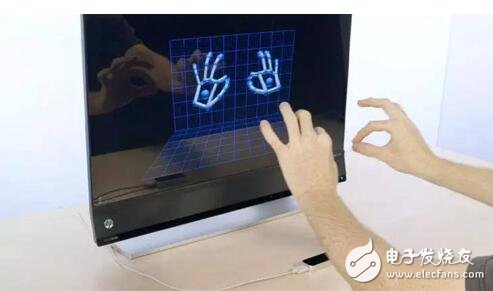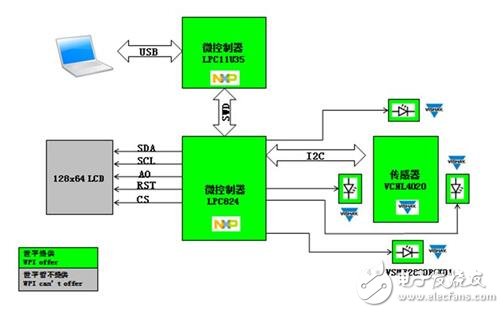Gesture recognition is no stranger to us. Gesture recognition technology has been around for a long time, and it is gradually maturing. Now most consumer applications are trying to increase this recognition function, whether it is smart home, smart wearable and VR. In the application field, the gesture recognition control function has been added, which will become a major selling point of the application. Gesture recognition can bring a lot of benefits, features cool, easy to operate, and has a good power-up function in many applications.
Development of gesture recognition technology
Speaking of the development of gesture recognition technology, it can be roughly divided into two stages: two-dimensional gesture recognition and three-dimensional gesture recognition.
The early gesture recognition recognition is based on the recognition technology of two-dimensional color images. The so-called two-dimensional color image refers to the two-dimensional static image obtained by shooting the scene through the ordinary camera, and then the content recognition in the image through computer graphics algorithm. . Two-dimensional hand recognition can only recognize a few static gestures, and these actions must be preset in advance.
Compared to two-dimensional gesture recognition, three-dimensional gesture recognition adds a Z-axis of information that identifies various hand shapes, gestures, and movements. Three-dimensional gesture recognition is also the main direction of the development of gesture recognition. However, such gesture recognition with certain depth information requires special hardware to implement. Common is done by sensors and optical cameras.
Key technologies for gesture recognition
The most critical aspects of gesture recognition include tracking of gesture actions and subsequent computer data processing. About gesture motion capture is mainly achieved by optical and sensor. Algorithms for gesture recognition speculation, including template matching techniques (used by two-dimensional gesture recognition techniques), statistical sample features, and deep learning neural network techniques.

Depending on the hardware implementation, there are currently three types of gesture recognition used in the industry:
1. Structure Light, which calculates the position and depth information of an object by laser refraction and algorithm, thereby restoring the entire three-dimensional space. Representative products of structured light are Microsoft's Kinect generation. However, since the position of the refracted light has been calculated to calculate the position, this technique cannot calculate accurate depth information, and has strict requirements on the distance of recognition.
2. TIme of Flight, loading a light-emitting component, capturing the flight time of the calculated photon through the CMOS sensor, calculating the distance of the photon flight based on the photon flight time, and obtaining the depth information of the object. The representative work is Intel's 3D camera with gesture recognition.
3. Multi-angle imaging (MulTI-camera), which is now used by Leap MoTIon, the leader in gesture recognition. It uses two or more cameras to simultaneously acquire images. By comparing the differences between the images obtained by these different cameras at the same time, an algorithm is used to calculate the depth information, thereby multi-angle three-dimensional imaging.
Briefly introduce two gesture recognition solutions:
1. Gesture recognition scheme based on NXP LPC824 and Vishay VCNL4020
A gesture recognition solution based on the NXP LPC824 and Vishay VCNL4020 is available to determine the direction of gesture movement.
Functional block diagram

Functional description
1 gesture recognition, LCD shows the direction of gesture movement
2 compatible with arduino interface
3 VCNL4020 Induced light intensity changes
4 integrated debugger, no third-party debugger required
Important feature
1 VSMF2890RGX01 emits infrared light
2 LPC824M201JHI33 running gesture recognition algorithm
3 LPC11U35FHI33 is the debugger
2, based on PAJ7620U2 intelligent space gap gesture solution
Pixart is a leading CMOS light sensing application IC featuring low power consumption, accuracy, small size and low cost.
Functional block diagram

The PAJ7620U2 is an optical array sensor for complex gesture and cursor mode output.
Main feature
• Built-in light source and ambient light suppression filter integrated LED, lens and gesture sensor in a small cube module. Can work in dark or low light environments, reducing ambient light interference.
• Built-in gesture recognition supports nine gesture types and output gesture interruptions and results, greatly saving system power.
• Support for a 240Hz report programmable gesture interrupt wake-up system.
Applications
Rearview mirror, vehicle control, HUD, smart glasses, robot, VR, preschool education products. . and many more.
Ridge Cap Roll Forming Machine
Ridge Cap Roll Forming Machine is a common and popular machine in the field.
Ridge Caps, Ridge Rolls or Ridge Flashings are metal objects that cap the ridge of a roof.
For Metal Roof It has advantage of pretty appearance, durable using and so on. It is produced continuously as roll forming machine instead using bending machine to make angel tile saving human resources, lower labor cost.The ridge caps are widely used in residential house,workshop,commercial building.
Ridge Cap Roll Forming Machine,Ridge Cap Metal Roof Forming Machine,Steel Ridge Cap Roll Forming Machine, Automatic Ridge Cap Cold Roll Forming Machine
HEBEI HANMAC MACHINE CO., LTD. , https://www.chinahanmac.com